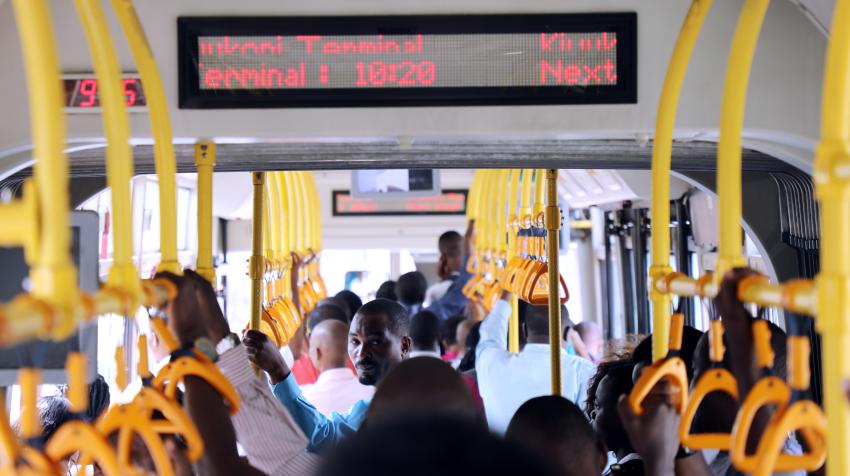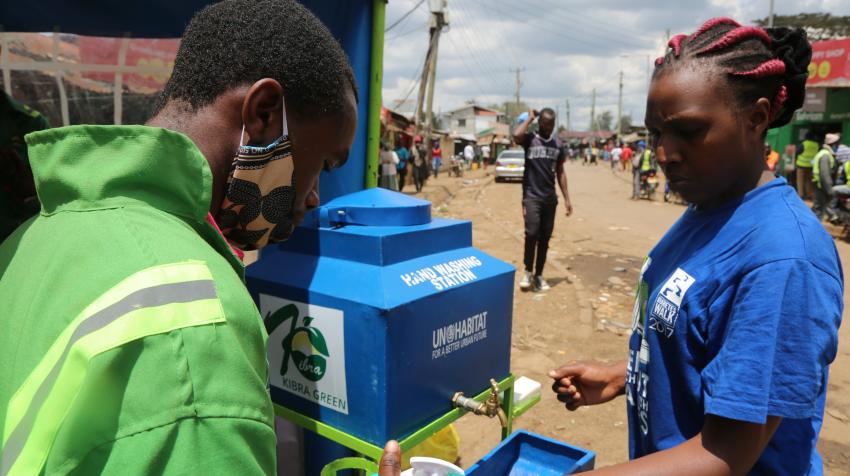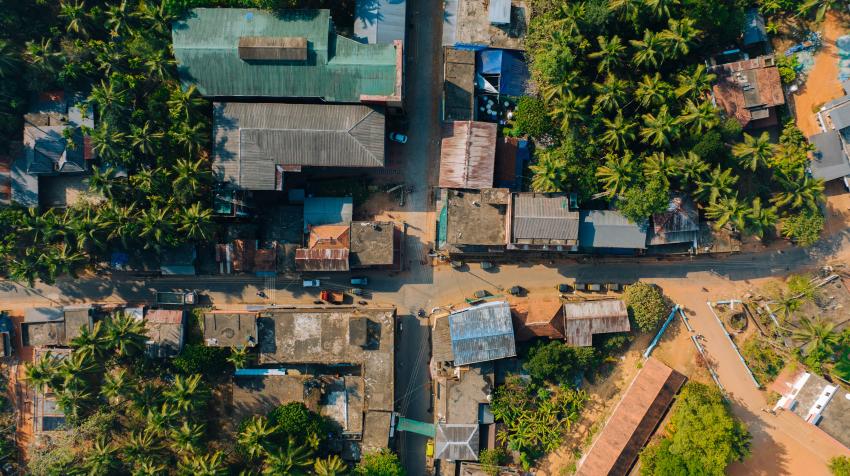30 October 2023
Today, more than half of the world’s population live in cities. By 2050, almost 70 per cent of us will be urban dwellers. That’s 6.3 billion people who will need access to a clean water supply, functional sanitation, and appropriate sewage and waste disposal systems. That’s also 6.3 billion people who will need to be transported day to day in a sustainable and efficient manner; housed in safe and healthy settlements; and hosted in cities resilient to climate change, extreme weather events and disease transmission.
To state it plainly: our future is undoubtedly urban. Urbanization has been and will remain one of the most powerful mega-trends of the twenty-first century. It should come as no surprise then that well-planned towns and cities will be central to our sustainable development.
The good, the bad and the solution
For decades, cities have been the engine of national and global economic growth. They contribute more than 80 per cent of global GDP and display higher levels of productivity than those of rural areas.
Yet cities are also a major source of global problems. They are the biggest source of pollution in the world, contributing 70 per cent of global greenhouse gas emissions. Rapid urbanization is no longer happening in developed countries, but it is an ongoing phenomenon in the developing world. About 60 per cent of the population in developing countries is expected to live in cities by 2030—and over 90 per cent of the future urban population growth will take place in Asia, Africa and Latin America.
Nevertheless, regardless of where they are located, most cities are not able to combine economic productivity, social inclusion and environmental sustainability. As discussed in the World Cities Report 2022: Envisaging the Future of Cities, this inability means that transformation in cities and communities along certain priority areas is required to achieve the Sustainable Development Goals (SDGs). Cities can, however, play a key role in advancing the Goals if the required transformation takes place.
The Organisation for Economic Co-operation and Development estimates that two thirds of the SDGs can only be achieved by action at the local and regional levels. SDG 11 on making cities and human settlements inclusive, safe, resilient and sustainable is no exception—but achieving it will come at a cost.
Meeting SDG 11: Money talks
There is no easy way to come up with the costs of realizing SDG 11. Different countries will have different investment needs depending on their specific characteristics.

Still, results from a 2020 study by UN-Habitat—the United Nations agency for human settlements and sustainable cities—show that achieving SDG 11 in a small city in a developing country could cost anywhere from $20 million to $50 million annually; from $140 million to more than $500 million for a medium-sized developing city in Colombia, India or Bolivia; and from $600 million to over $5 billion for large developing cities like Kuala Lumpur or Bogota.
On housing alone, an estimated $4 trillion is required annually to meet the targets set by SDG 11 on adequate housing for all.
If we can’t precisely put a number on what realizing SDG 11 would cost us, we do know what it would cost us not to achieve it. Under a worst-case scenario, developing regions will pay the price of inaction owing to existing vulnerabilities and structural fragilities. Cities in Africa will lose up to two thirds of their financial resources, slum-like conditions will expand in poorer regions, millions will be pushed into extreme poverty, climate effects will trigger additional urban crises and development gains will be reversed.
Flipping the coin on sustainable investment is therefore no way out: the world must invest in its urban future, and this will require innovative financing instruments and new, diversified funding sources.
Financing sustainable urban development
In the current economic situation, local governments have faced increased difficulty in gaining access to external resources to fund their development. Multilateral development banks remain by far the largest providers of international funding for sustainable urban development financing, and for many local governments—particularly those in low-income and lower-middle-income countries—intergovernmental transfers remain a major source of funding, accounting for up to 90 per cent or more of their total local revenue, as is the case for many cities in sub-Saharan Africa.
Closing the infrastructure financing gap is key in ensuring that cities can meet their urban infrastructure development needs. Alternative financing methods exist and have already been adopted around the world, allowing cities and local governments to unlock different sources of capital and thus become more attractive to investors.
One of the main ways for cities to generate more funding is to invest in themselves. By improving their own source revenue—or direct municipal revenues such as property taxes, user fees and charges—cities can increase their absolute revenue and improve their fiscal autonomy, which in turn allows them to better provide urban infrastructure and services.

UN-Habitat has been encouraging the use of tools such as Rapid Own-Source Revenue Analysis (ROSRA), designed to help raise the own-source revenues of local governments by supporting their self-diagnosis.
For small city governments whose creditworthiness isn’t very strong, a pooled financing approach can be used to meet investment requirements.
Blended finance can also be used to complement scarce public funds with private sector capital, with the aim of realizing innovative, high-impact infrastructure projects that contribute to sustainable development, all the while providing adequate financial returns and reducing risks for investors. Similarly, municipal development funds established at the national level can channel resources in the form of loans, grants and sometimes blended finance for investment in urban infrastructure or housing. Over 60 countries have already established such municipal development funds worldwide.
However, financing sustainable urban development cannot happen without enabling frameworks. As much as investment is needed in our cities, developing a sound regulatory and institutional system will be equally crucial to generating and attracting funding.
Setting the stage for this to occur requires several adjustments and potential reforms. These include establishing a clear legal and regulatory system to authorize and govern subnational and local government borrowing, and to develop effective and efficient land and property systems and markets; ensuring that adequate institutions are in place, with the right skills and capacity needed to structure and implement financing instruments and to avail the private sector of investment opportunities; monitoring spending levels, tax rates and liabilities with respect to financing instruments to positively affect the willingness of the private sector to invest; and using credit ratings to help demonstrate the creditworthiness of cities in order to attract financing from capital markets and the private sector.
On 2 October, the world celebrated World Habitat Day, launching a month of activities and discussions around sustainable urban development, resilience and growth. On World Cities Day, observed on 31 October, we’ll focus on identifying tools and services needed to unlock investments in cities and finance sustainable urban development.
If we are to meet the promises of the SDGs, bold changes and actions at the local level are needed—and they are needed now.
The UN Chronicle is not an official record. It is privileged to host senior United Nations officials as well as distinguished contributors from outside the United Nations system whose views are not necessarily those of the United Nations. Similarly, the boundaries and names shown, and the designations used, in maps or articles do not necessarily imply endorsement or acceptance by the United Nations.




